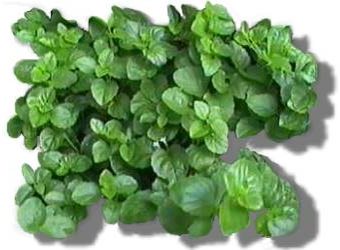 People choose alternative medicine and natural health over conventional health practices for a number of reasons. Perhaps you are at a point in your life where you are experiencing minor health problems and are seeking alternative methods to conventional health practices that often don't work. Or, perhaps you feel healthy and want to maintain this health by supplementing your current diet and lifestyle with natural health practices.
People choose alternative medicine and natural health over conventional health practices for a number of reasons. Perhaps you are at a point in your life where you are experiencing minor health problems and are seeking alternative methods to conventional health practices that often don't work. Or, perhaps you feel healthy and want to maintain this health by supplementing your current diet and lifestyle with natural health practices.Types of Alternative Medicine
Since there are varying types of alternative medicine each offering their own philosophy and discipline, you will have to decide what form of alternative medicine is best able to help you heal any particular health problems that you have. Following are types of alternative medicine:
- Herbal medicine. Herbal medicine uses certain properties of herbs and other plants in the form of dietary supplements as a means to promote health and to heal specific health problems. Plant parts used can include the leaves, flowers, stems, or a combination of all. Examples of some commonly used herbal medicines include green tea which may have an anti-cancer effect, valerian root used to treat insomnia, peppermint tea for digestive issues, and Echinacea extracts to limit the length of colds.
- Chinese herbal medicine. Also known as "herbology," Chinese herbal medicine involves combining medicinal herbs to heal the body. The focus is on preventing disease before it has a chance to manifest itself, as well as treating existing health problems. A key to the success of Chinese herbal medicine is the treatment of each patient as an individual with herbs mixed specifically for each patient.
- Acupuncture. Acupuncture is a technique of inserting and manipulating needles into acupuncture points on the body to stimulate nerve impulses and restore health and well-being. It is believed that your life energy, or "qi," travels along your body on what are known as "meridians". When this flow of energy is broken and damaged, your body is weak and results in health issues.
- Acupressure. Acupressure involves placing physical pressure by hand or elbow on acupuncture points on the surface of the body. Shiatsu is a form of acupressure that promotes the prevention and recovery of illnesses by stimulating the immune system and natural healing power the people already possess.
- Massage. The goal of massage is to apply pressure, tension and motion to the soft tissues of the body to assist with healing injury, relieving psychological stress, manage pain and improve circulation.
- Reflexology. Also known as "zone therapy," reflexology is the practice of stimulating nerves on the feet, hands and ears to encourage a beneficial effect on other parts of the body, or to improve your general well-being. It stimulates the blood flow to particular parts of your body while relieving the tension in your body and mind.
- Homeopathy. Homeopathy is the principle of "treating like with like." Homeopathic remedies are substances derived from plants and minerals that are diluted in a precise way as to cause toxic behavior and cure the symptoms.
- Yoga. Yoga uses specific body "postures" to reduce stress, slow breathing and heart rate, lower blood pressure, and promote relaxation that is necessary for a healthy mind and body.
- Aromatherapy. Aromatherapy uses the extracts of plants, known as essential oils, and other scented compounds to relax and balance the body. An example of aromatherapy is eucalyptus oil and mint which is used to provide relief for the airways during a cold or the flu.
- Ayurveda. Ayurveda operates on the precept that various materials of vegetable, animal, and mineral origin have some medicinal value for curing illness and/or for maintaining good health. Ayurveda originated in India and is based on the philosophy that disease occurs when you are not living harmoniously within your environment.
- Meditation. Meditation is a relaxation technique used to reduce and alleviate symptoms of ill health including headaches, back pain and high blood pressure.
These are examples of alternative medicine. Since there are many variations, it is important to research alternative medicine as it relates to your health issues and your lifestyle.

